Microgreens are a fun way to keep fresh veggies within arm’s reach. In a few weeks you can be feasting (well at least munching) handfuls of delicious stuff. You may feel your inner rabbit coming out during the growth phase (2-4 weeks) but withhold early desires to munch on anything until “true leaves” emerge.
To do this exercise you need three things: Seeds, soil and containers.
Lots of different seeds and mixes are available individually and in collections from companies including Johnny’s, Fedco, Territorial. The mix I will send you includes three different mixes from Fedco (Greens Mix: beets, chard, arugula, mustards, orachs, purslane, chervil and kales. Mustard mix: mizuna, chervil, endives, sorrel, Red Giant mustard, arugula and tatsoi. Lettuce mix: six unlisted varieties) Easiest seeds to grow: Arugula, corn, cress, kale, mesclun, nasturtiums, mizuna, sunflowers, pac choi, peas, mustards. Agway in Danbury is open (and does curbside delivery,) has seeds and soil last time I checked as do many local supermarkets.
Soil: If you don’t have access to soil, let me know with your seed request and I will send you a recipe for soil that you can make from things in your house. If you are digging some soil from your back yard, try to look for samples that are light in weight rather than heavy e.g. full of clay. It is best to sterilize it before using; put your soil on a cookie tray or oven-safe dish at 200 degrees for 30 minutes. Let it cool.
If you are buying soil, top soil is too heavy to start seedlings. Look for a good organic mix (Coast of Maine is particularly good; avoid Miracle-Gro) You can make your own, however, with the following recipe: 1 part peat moss, 1 part compost/manure, 1 part perlite, sprinkling of kelp meal. This is also a great mix for potting up plants in the spring and summer.
Containers: Any container can be used to grow microgreens: plastic containers from the supermarket for greens, take-home clamshells, milk and egg cartons, etc. Commercial growers (and I) use 1020 trays (10”x20”) (You can get them on Amazon; don’t pay more than $2 each including shipping) Holes should be put in the bottom of any container to minimize threat of mold and fungus. Best way to prevent this is for each crop have two same-sized containers, one with holes one without. Put a thin layer of stones in the container without holes and nest the one with holes on top.
TECHNIQUE:
1) Place around 2 inches of moist (not damp) soil in your container.
2) Using a stick, etch rows in the container about 1.5 inches apart, ¼ inch deep. You can also use a “broadcast method” where you spread seeds over a wide vs. narrow space so it looks like a field of greens.
3) Using a cup, hand seed spreader or fingers, put seeds in rows ¼ inch apart. Cover seeds with soil.
4) Water containers with spray bottle.
5) Container should get 6 hours of sun each day. Continue watering ensuring that soil does not dry out. Be careful, though that the trays are not waterlogged as microgreens are susceptible to fungus and mold. If there is not moving air near your tray, you might want to put a small fan nearby. As it is getting warmer, after the seeds germinate you can put them outside during the day. Just be careful of hungry critters. For now the greens should be brought in during the evening unless they are protected from cold and animals.
6) Harvesting can be done when leaves reach a height of 1.5 to 2 inches in height; these are true microgreens and you can start to harvest them with a very sharp scissor. However, you can wait for other greens to reach heights of 3-5 inches where they will bunch up with multiple leaves. Some varieties can be harvested multiple times. Experiment to see what works best for you.
Reference book: Cooking with Microgreens: The grow your own superfood, Sal Gilbertie. Sal is a local farmer who has a great store in Westport, farm in Easton, and has contributed a lot to Ann’s Place. He is the largest grower of organic herbs in the U.S. The book is around $7.50 used on Amazon.
Now you can get both greens and microgreens from this planting. As your microgreens get ready to harvest, thin out those plants that are the closest to each other leaving space for the other ones to grow. In a few more weeks you can have full sized greens to eat. Thinning out the small makes room for the large.
So that is it for this class and I hope everyone is safe and healthy. At Ann’s Place we do have the capability for video conferencing via Zoom. If folks are interested, we could set up some video classes later this month. Just ping me and let me know.
Take care and be well,
erik
















